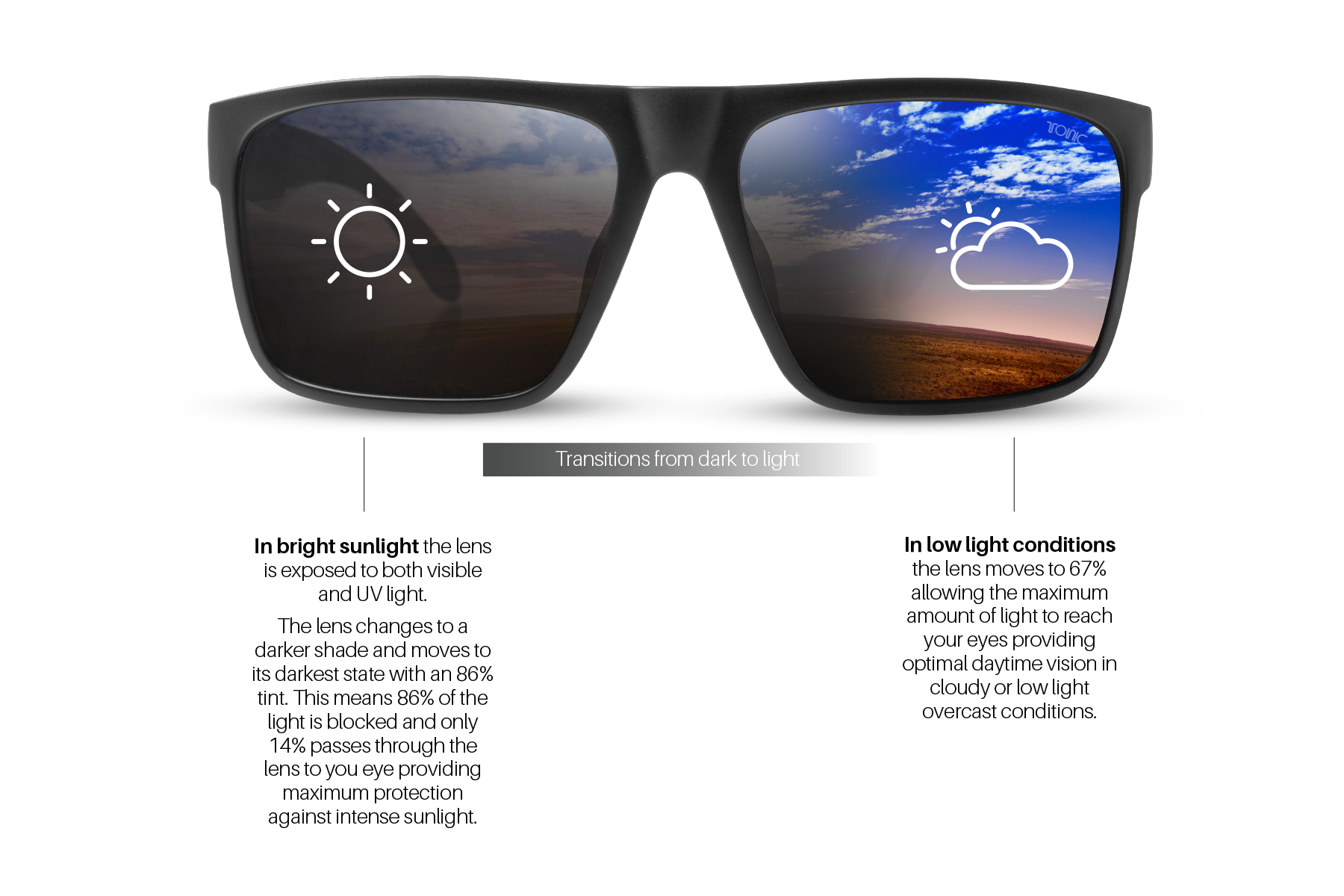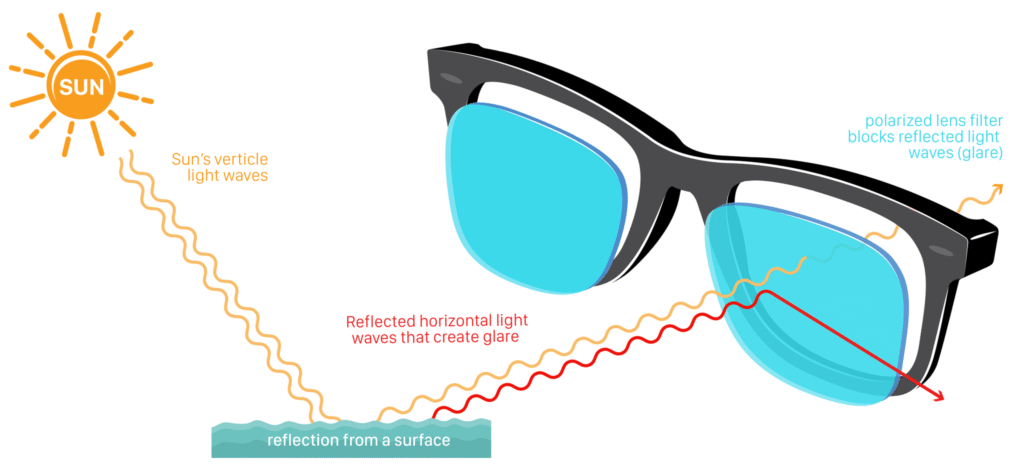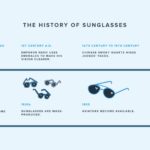The world is a bright place, and sometimes, it’s a little too bright. Whether you’re driving down a sun-drenched highway, enjoying a day on the water, or simply strolling through a city on a clear afternoon, the glare from reflective surfaces can be incredibly distracting and even dangerous. This is where polarized sunglasses step in, offering a solution that goes beyond simple tinting. They’re not just about darkening your view; they’re about cutting through the haze and revealing the world in clearer, sharper detail. The importance of eye protection is often underestimated, but prolonged exposure to glare can lead to eye fatigue, headaches, and even long-term vision problems. Polarized sunglasses mitigate these risks, making them an essential accessory for anyone who spends time outdoors.
But what exactly are polarized sunglasses, and how do they work their magic? It’s more than just a marketing buzzword; it’s a specific technology that addresses a particular type of light. Unlike regular sunglasses that simply reduce the overall intensity of light, polarized lenses are designed to block horizontally polarized light – the kind of light that bounces off flat surfaces like water, snow, and asphalt. This reflected light is what causes glare, and it’s the reason why things often appear washed out and difficult to see in bright conditions. By eliminating this glare, polarized sunglasses enhance contrast, improve visual clarity, and reduce eye strain.

In today’s world, where we’re constantly bombarded with information and visual stimuli, the ability to see clearly and comfortably is more important than ever. From athletes seeking a competitive edge to everyday individuals looking for relief from the sun’s harsh glare, polarized sunglasses offer a significant advantage. The market is flooded with options, from budget-friendly pairs to high-end designer brands, each promising the best in polarized technology. Understanding the science behind polarization, the different types of lenses available, and the benefits they offer is crucial for making an informed decision and choosing the right pair of sunglasses for your needs. This article will delve into the details, exploring the world of polarized sunglasses and helping you understand why they’re a valuable investment in your eye health and visual comfort.
The current context is also influenced by increasing awareness of UV protection. While polarization addresses glare, UV protection safeguards your eyes from harmful ultraviolet rays. Many polarized sunglasses combine both features, offering comprehensive protection. The fashion aspect is also significant, with a wide array of styles and designs available to suit different tastes and preferences. From classic aviators to sporty wraparounds, there’s a pair of polarized sunglasses for everyone. As technology advances, we can expect even more innovative features and improved performance in polarized lenses, further enhancing their value and appeal.
Understanding Polarization: The Science Behind the Lenses
To truly appreciate the benefits of polarized sunglasses, it’s essential to understand the science behind how they work. Light, as we know, travels in waves. Ordinary light vibrates in all directions. However, when light reflects off a flat surface, it becomes polarized, meaning its waves vibrate predominantly in one direction – horizontally. This horizontally polarized light is what we perceive as glare.
How Polarized Lenses Work
Polarized lenses contain a special filter, usually made of a chemical film, that is vertically aligned. This vertical alignment allows vertically polarized light to pass through while blocking horizontally polarized light. Think of it like a Venetian blind: the slats are vertical, allowing light to pass through vertically but blocking light coming in horizontally. By blocking the horizontally polarized light, these lenses effectively eliminate glare, resulting in clearer, sharper vision.
- The Polarization Process: The chemical film is applied to the lens during manufacturing, ensuring a uniform and consistent polarization effect.
- Vertical Alignment: The key to blocking glare is the precise vertical alignment of the polarizing filter.
- Glare Reduction: By blocking horizontally polarized light, polarized lenses reduce glare from water, snow, asphalt, and other reflective surfaces.
The effectiveness of polarized lenses is directly related to the quality of the polarizing filter and the precision of its alignment. Lower-quality lenses may have inconsistencies in the filter, leading to incomplete glare reduction and potentially distorted vision. It’s important to choose reputable brands and look for lenses that meet established standards for polarization efficiency.
The Difference Between Polarized and Non-Polarized Sunglasses
While both polarized and non-polarized sunglasses reduce the overall intensity of light reaching your eyes, they do so in different ways. Non-polarized sunglasses simply darken the view, reducing the amount of light that passes through the lenses. This can be helpful in reducing eye strain in bright conditions, but it doesn’t eliminate glare. In contrast, polarized sunglasses specifically target and block horizontally polarized light, effectively eliminating glare and improving visual clarity.
| Feature | Polarized Sunglasses | Non-Polarized Sunglasses |
|---|---|---|
| Glare Reduction | Excellent | Minimal |
| Visual Clarity | Enhanced | Reduced |
| Contrast | Improved | Slightly Reduced |
| Eye Strain | Significantly Reduced | Reduced |
| Cost | Generally Higher | Generally Lower |
Consider a scenario: you’re driving on a sunny day, and the glare from the hood of your car is making it difficult to see the road. Non-polarized sunglasses might darken the glare, but it will still be present. Polarized sunglasses, on the other hand, would eliminate the glare altogether, allowing you to see the road clearly and safely. This difference in performance makes polarized sunglasses a superior choice for activities where glare is a significant factor.
Real-World Examples and Case Studies
The benefits of polarized sunglasses are evident in various real-world scenarios. For example, fishermen often rely on polarized lenses to see through the surface of the water and spot fish. Boaters use them to reduce glare from the water’s surface, improving visibility and safety. Drivers benefit from reduced glare from the road and other vehicles, making driving safer and more comfortable. Even everyday activities like walking or biking can be enhanced by the improved visual clarity and reduced eye strain offered by polarized sunglasses.
Case Study: A study conducted by a leading ophthalmology institute found that drivers wearing polarized sunglasses experienced a 27% reduction in reaction time compared to drivers wearing non-polarized sunglasses in bright, sunny conditions. This highlights the significant safety benefits of polarized lenses in reducing glare and improving visual performance while driving.
Expert Insights
According to Dr. Emily Carter, a renowned optometrist, “Polarized sunglasses are not just a fashion accessory; they’re a valuable tool for protecting your eyes and enhancing your vision. By eliminating glare, they reduce eye strain, improve visual clarity, and can even improve your performance in various activities. I highly recommend polarized sunglasses to anyone who spends time outdoors, especially in environments with high levels of glare.”
Furthermore, experts emphasize the importance of choosing polarized sunglasses that also offer UV protection. UV rays can damage your eyes over time, leading to cataracts and other vision problems. Look for lenses that block 100% of UVA and UVB rays to ensure comprehensive protection.
Choosing the Right Polarized Sunglasses: Factors to Consider
With so many options available, choosing the right pair of polarized sunglasses can be overwhelming. It’s important to consider several factors, including lens material, frame style, fit, and specific activities you’ll be using them for. Understanding these factors will help you make an informed decision and find a pair of sunglasses that meets your needs and preferences.
Lens Material: Glass vs. Polycarbonate
Polarized lenses are typically made from either glass or polycarbonate. Each material has its own advantages and disadvantages.
- Glass Lenses: Offer superior optical clarity and scratch resistance. However, they are heavier and more prone to shattering upon impact.
- Polycarbonate Lenses: Lightweight, impact-resistant, and more affordable than glass lenses. They are a good choice for sports and other activities where durability is important.
Comparison: If optical clarity is your top priority and you’re not concerned about weight or impact resistance, glass lenses may be a good choice. However, for most people, polycarbonate lenses offer a good balance of performance, durability, and affordability.
Tip: Look for polycarbonate lenses with a scratch-resistant coating to improve their durability and longevity.
Lens Color and Tint
The color and tint of your polarized lenses can affect how you perceive colors and contrast. Different colors are better suited for different activities and environments.
- Gray Lenses: Provide true color perception and are ideal for general use.
- Brown Lenses: Enhance contrast and are good for activities like driving and golf.
- Green Lenses: Offer good color balance and are suitable for a variety of activities.
- Yellow/Orange Lenses: Increase contrast in low-light conditions and are often used for skiing and snowboarding.
Choosing the Right Tint: Consider the activities you’ll be using your sunglasses for and choose a tint that enhances your vision in those specific environments. For example, if you’re a keen angler, brown or amber lenses will help you see through the water better.
Frame Style and Fit
The frame style and fit of your sunglasses are important for both comfort and performance. Choose a frame style that complements your face shape and fits comfortably on your nose and ears.
- Face Shape: Consider your face shape when choosing a frame style. Round faces look good with angular frames, while square faces look good with round or oval frames.
- Fit: The sunglasses should fit snugly on your nose and ears without being too tight. They should also provide adequate coverage to protect your eyes from sunlight and glare.
- Activity: Consider the activities you’ll be using your sunglasses for. For sports and other active pursuits, choose a frame style that is secure and won’t slip off your face.
Example: If you have a round face, try frames with sharp angles like rectangular or square frames. If you have an oval face, most frame styles will suit you.
UV Protection
While polarization reduces glare, it doesn’t necessarily protect your eyes from harmful UV rays. It’s important to choose polarized sunglasses that also offer 100% UV protection. Look for lenses that block both UVA and UVB rays.
Checking for UV Protection
Check the product label or description to ensure that the sunglasses offer 100% UV protection. You can also have your sunglasses tested at an optical store to verify their UV protection level.
Expert Advice: “Always prioritize UV protection when choosing sunglasses,” advises Dr. Carter. “Prolonged exposure to UV rays can lead to serious eye damage, including cataracts and macular degeneration.”
Budget and Brand
Polarized sunglasses are available in a wide range of prices, from budget-friendly options to high-end designer brands. While it’s tempting to go for the cheapest option, it’s important to invest in a pair of sunglasses that offers good quality lenses and frames.
- Budget: Determine your budget before you start shopping.
- Brand Reputation: Research different brands and read reviews to get an idea of their reputation for quality and performance.
- Warranty: Look for sunglasses that come with a warranty to protect against defects in materials and workmanship.
Summary and Recap
Polarized sunglasses are more than just a fashion statement; they are a valuable tool for protecting your eyes and enhancing your vision. By blocking horizontally polarized light, they eliminate glare, improve visual clarity, and reduce eye strain. This makes them an essential accessory for anyone who spends time outdoors, whether you’re driving, boating, fishing, or simply enjoying a walk in the park.
We’ve covered the science behind polarization, explaining how polarized lenses work to block glare. We’ve also discussed the difference between polarized and non-polarized sunglasses, highlighting the superior performance of polarized lenses in reducing glare and improving visual clarity. Real-world examples and case studies have demonstrated the practical benefits of polarized sunglasses in various activities and environments.
Choosing the right pair of polarized sunglasses involves considering several factors, including lens material, lens color, frame style, fit, and UV protection. Glass lenses offer superior optical clarity, while polycarbonate lenses are more durable and impact-resistant. Different lens colors are better suited for different activities, and it’s important to choose a frame style that complements your face shape and fits comfortably.
- Key Takeaway 1: Polarized sunglasses block horizontally polarized light, eliminating glare and improving visual clarity.
- Key Takeaway 2: Choose polarized sunglasses that also offer 100% UV protection.
- Key Takeaway 3: Consider lens material, lens color, frame style, and fit when choosing polarized sunglasses.
Investing in a good pair of polarized sunglasses is an investment in your eye health and visual comfort. By making an informed decision and choosing the right pair for your needs, you can enjoy clearer, sharper vision and protect your eyes from the harmful effects of glare and UV rays. Remember to prioritize quality and performance over price, and look for reputable brands that offer warranties and guarantees.
Finally, remember to clean and care for your polarized sunglasses properly to ensure their longevity and performance. Use a microfiber cloth to clean the lenses and avoid using harsh chemicals or abrasive materials. Store your sunglasses in a protective case when you’re not wearing them to prevent scratches and damage.
Frequently Asked Questions (FAQs)
What is the difference between polarized and UV protection?
Polarization reduces glare by blocking horizontally polarized light, which is light that reflects off surfaces like water or snow. UV protection, on the other hand, blocks harmful ultraviolet (UV) rays from the sun, which can damage your eyes over time. While some sunglasses offer both polarization and UV protection, they are distinct features. Polarization enhances visual clarity by reducing glare, while UV protection safeguards your eye health by blocking harmful UV radiation.
Are polarized sunglasses suitable for all activities?
Polarized sunglasses are generally excellent for activities involving bright sunlight and reflective surfaces, such as driving, boating, fishing, and skiing. However, they may not be ideal for all situations. For example, pilots may find that polarized lenses interfere with the visibility of LCD screens in the cockpit. Similarly, some digital displays may appear distorted or difficult to read when viewed through polarized lenses. It’s always a good idea to test your sunglasses with any digital devices you’ll be using to ensure compatibility.
How do I know if my sunglasses are truly polarized?
A simple test to check if your sunglasses are polarized is to hold them in front of an LCD screen (like a computer monitor or smartphone) and rotate them 90 degrees. If the lenses darken or the image disappears at a certain angle, then the sunglasses are polarized. Another test is to look at a reflective surface, such as a puddle or a car windshield. If the glare is significantly reduced when you put on the sunglasses, then they are likely polarized. You can also consult the product label or description, which should clearly state whether the lenses are polarized.
Can polarized sunglasses be prescription?
Yes, polarized sunglasses can be made with prescription lenses. Many optical stores offer prescription polarized lenses in a variety of materials and tints. You’ll need to provide your prescription to the optician, and they can create custom polarized sunglasses that correct your vision while also reducing glare. This is a great option for people who need corrective lenses and want the benefits of polarized sunglasses for outdoor activities.
How should I care for my polarized sunglasses?
To keep your polarized sunglasses in good condition, clean them regularly with a microfiber cloth and a mild lens cleaner. Avoid using paper towels or harsh chemicals, as these can scratch the lenses or damage the polarizing filter. Store your sunglasses in a protective case when you’re not wearing them to prevent scratches and damage. Also, avoid exposing your sunglasses to extreme temperatures, as this can warp the frames or damage the lenses.



